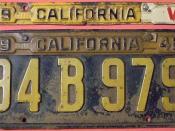I. IntroductionThe key question is whether PepsiCo should expand its restaurant business by pursuing the purchase of CARTS OF COLORADO, a $7 million manufacturer and merchandiser of mobile food carts and kiosks, and CALIFORNIA PIZZA KITCHEN, a $34 million restaurant chain in the casual dining segment.
II. Analysis of the main problemPepsiCo has 3 main segments: soft drinks (35% of PepsiCo's sales and 39% of its operating profits in 1991), snack foods (29% of PepsiCo's sales and 35% of its operating profits) and restaurants (36% of PepsiCo's sales and 26% of its operating profits). In the early 1990's PepsiCo's three restaurant chains (KFC, Taco Bell and Pizza Hut) were the leaders in their respective segment. PepsiCo's senior management believes its ability to move people within and across divisions gives PepsiCo a competitive advantage in the restaurant segment. PepsiCo believes their restaurants perform due to their strong management teams; which are developed within the corporation.
PepsiCo would like to utilize their competitive advantage in running restaurants with PepsiCo managers by adding California Pizza Kitchen and CARTS OF COLORADO to the PepsiCo portfolio.
Despite PepsiCo's success with KFC, Taco Bell and Pizza Hut it had difficulty expanding La Petite Boulangerie, a three-unit bakery chain it purchased in 1982. The large overhead for La Petite Boulangerie made the company unprofitable and Pepsi sold it in 1987 for a $13 million loss. The unsuccessful venture into La Petite Boulangerie suggested that although PepsiCo managers were gifted and could be easily moved across divisions; the moves would not always guarantees a successful business expansion.
Therefore, the main problem for PepsiCo management is to decide whether it can successfully purchase and administer CALIFORNIA PIZZA KITCHEN and CARTS OF COLORADO. This is in light of the fact that PepsiCo believes it has a competitive...


![[California delegates cheering on stagecoach at the 1912 Republican National Convention held at the Chicago Coliseum, Chicago, Illinois, June 18-22, 1912] (LOC)](https://s.writework.com/uploads/9/94858/california-delegates-cheering-stagecoach-1912-republican-na-thumb.jpg)